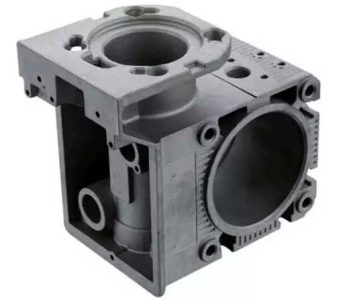Productcategorieën
Productlabels
Fabrikant van precisiegietwerk van roestvrij staal
Precisiegieten van roestvrij staal wordt ook wel investeringsgieten genoemd, silicasol-proces. Het is een gietproces waarbij minder onderdelen hoeven te worden gesneden of geen bewerking nodig is. Het is een uitstekende procestechnologie in de gieterij-industrie, en de toepassing ervan is zeer breed. Niet alleen is het geschikt voor het gieten van diverse soorten en legeringen, maar de maatnauwkeurigheid en oppervlaktekwaliteit van de geproduceerde gietstukken zijn hoger dan bij andere gietmethoden. Complex, bestand tegen hoge temperaturen, Moeilijk te verwerken gietstukken kunnen door middel van investeringsgieten worden gegoten.
Precisiegieten van roestvrij staal wordt ook wel investeringsgieten genoemd, silicasol-proces. Het is een gietproces waarbij minder onderdelen hoeven te worden gesneden of geen bewerking nodig is. Het is een uitstekende procestechnologie in de gieterij-industrie, en de toepassing ervan is zeer breed. Niet alleen is het geschikt voor het gieten van diverse soorten en legeringen, maar de maatnauwkeurigheid en oppervlaktekwaliteit van de geproduceerde gietstukken zijn hoger dan bij andere gietmethoden. Complex, bestand tegen hoge temperaturen, Moeilijk te verwerken gietstukken kunnen door middel van investeringsgieten worden gegoten.
Development history of investment casting methods
Modern investment casting methods were practically applied in industrial production in the 1940s. At that time, the development of aviation jet engines required the manufacture of heat-resistant alloy parts such as blades, impellers and nozzles with complex shapes, precise dimensions and smooth surfaces. Because heat-resistant alloy materials are difficult to machine, and the shapes of parts are complex, they cannot be manufactured by other methods. Daarom, it is necessary to find a new precision molding process, so learn from the ancient lost wax casting, after the improvement of materials and processes, modern investment casting methods have obtained important development on the basis of ancient processes.
Daarom, the development of the aviation industry has promoted the application of investment casting, and the continuous improvement and perfection of investment casting has also created favorable conditions for the aviation industry to further improve its performance. my country began to apply investment casting to industrial production in the 1950s and 1960s. Since then, this advanced casting process has been greatly developed, en wordt veel gebruikt in de luchtvaart, auto's, machine tools, ships, internal combustion engines, gas turbines, telecommunications equipment, weapons, medical equipment, and cutting tools. It is also used in the manufacture of arts and crafts.
What is investment casting?
The so-called investment casting process is simply to use fusible materials (such as wax or plastic) to make a fusible model (referred to as investment or model). Coat several layers of special refractory paint on it, dry and harden to form an integral shell, then use steam or hot water to melt the model from the shell, and then place the shell in the sand box. Fill it with dry sand molding around it, and finally put the mold into the roasting furnace for high-temperature roasting (if a high-strength shell is used, the demolded shell can be roasted directly). After the mold or shell is fired, molten metal is poured into it to obtain a casting.
The dimensional accuracy of investment castings is high, generally up to CT4-6 (sand casting is CT10~13, die casting is CT5~7). Natuurlijk, due to the complicated process of investment casting, there are many factors that affect the dimensional accuracy of castings. Bijvoorbeeld, the shrinkage of the mold material, the deformation of the investment mold, the linear change of the shell in the heating and cooling process, the shrinkage of the alloy, and the deformation of the casting during the solidification process. Daarom, although the dimensional accuracy of ordinary investment castings is relatively high, its consistency still needs to be improved (the dimensional consistency of castings using medium and high temperature wax materials should be improved a lot).
When pressing the investment mold, a pressure type with a high surface finish of the cavity is used, so the surface finish of the investment mold is also relatively high. In aanvulling, the shell is made of a refractory coating made of a special high-temperature resistant adhesive and refractory material, which is coated on the investment mold, and the inner surface of the cavity directly in contact with the molten metal has a high smoothness. Daarom, the surface finish of investment castings is higher than that of ordinary castings, generally reaching Ra.1.6~3.2μm.
The biggest advantage of investment casting is that because investment castings have high dimensional accuracy and surface finish, it can reduce CNC machining work. Just leave a little machining allowance on the parts with higher requirements, and even some castings only leave grinding and polishing allowances, so they can be used without mechanical processing. It can be seen that the use of investment casting method can greatly save machine tool equipment and processing man-hours, and greatly save metal raw materials.
Another advantage of the investment casting method is that it can cast complex castings of various alloys, especially high-temperature alloy castings. Bijvoorbeeld, the blade of a jet engine, its streamlined outline and cooling cavity, can hardly be formed by machining technology. Production with investment casting process can not only achieve mass production, ensure the consistency of castings, but also avoid the stress concentration of residual knife marks after machining.

Impeller blade precision casting

Outer profile and inner cavity precision casting

Investment casting alloy parts

Outer profile and inner cavity precision casting
Neem contact met ons op
Wachten op uw e-mail, wij zullen u binnen antwoorden 12 uur met waardevolle informatie die u nodig had.
 English
English العربية
العربية 中文(漢字)
中文(漢字) Čeština
Čeština Dansk
Dansk Nederlands
Nederlands Suomi
Suomi Français
Français Deutsch
Deutsch Italiano
Italiano 日本語
日本語 ಕನ್ನಡ
ಕನ್ನಡ 한국어
한국어 Português
Português Русский
Русский Slovenčina
Slovenčina Español
Español Svenska
Svenska Türkçe
Türkçe





